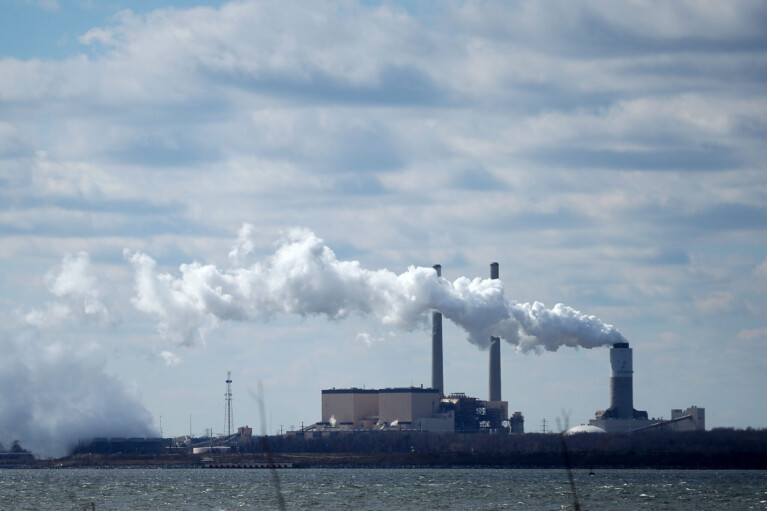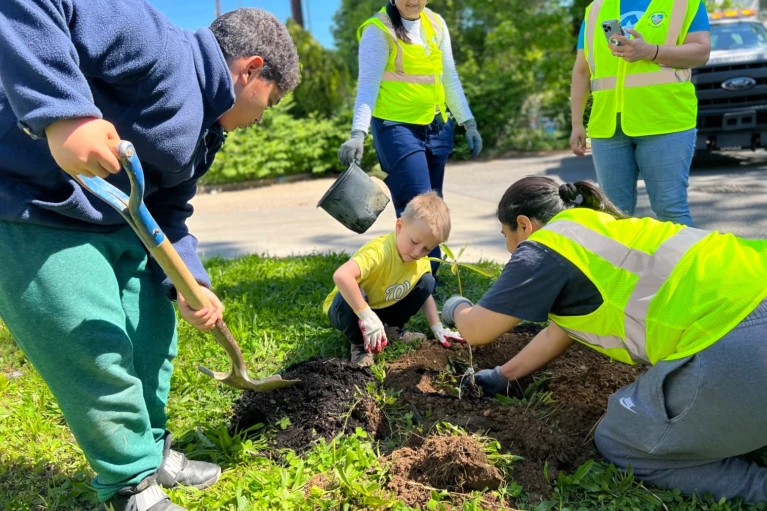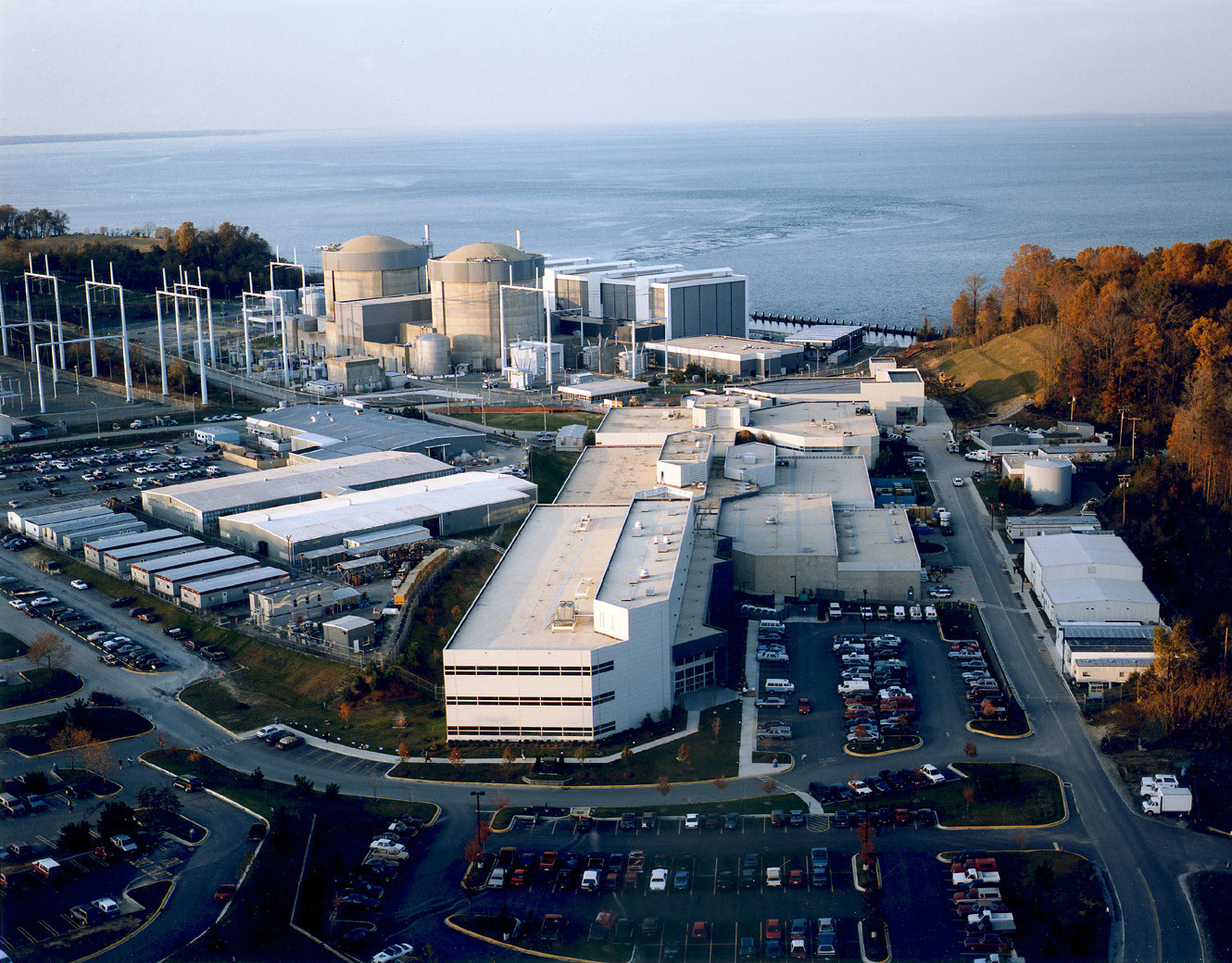Spill of plastic pellets in Maryland reveals the polluting potential of ‘nurdles’

By Whitney Popkin, Bay Journal
A train that derailed in the Anacostia River watershed on Sept. 23 introduced local officials to a source of pollution no one was quite prepared to handle: nurdles.
These tiny plastic pellets, each about the size of a lentil, are transported around the world as the raw materials of plastic production. At 1 a.m. on Sept. 23, during a tropical storm, a CSX train derailed, spilling an unknown quantity of the pellets from some of its 16 railcars.
The spill occurred in the stretch of tracks that crosses alternate U.S. Route 1 (Baltimore Avenue) on the south side of Hyattsville, just outside the District of Columbia and less than a half-mile from the Northeast Branch of the Anacostia River. The nurdles were made of recycled plastic and were on their way to be turned into new products. A CSX spokesperson did not answer a question about where the shipment was headed or how frequently nurdles are transported through the area.
“This is the first time in the recent memory of our staff for dealing with a train derailment,” said Cindy Zork, communications manager for Hyattsville.
There were no reported injuries and, other than a small amount of diesel fuel, “no hazardous materials” released in the spill. The city closed the busy thoroughfare to traffic for two weeks, frustrating local drivers.
But, Zork said, residents were equally concerned about the tiny white nurdles that covered the ground nearby.
Most state and local governments do not yet have rules in place for monitoring, preventing or cleaning up nurdle spills, according to The Great Nurdle Hunt, a project of the Finland-based nonprofit Fidra that aims to end nurdle pollution worldwide.
“A spill is often an occasion of great confusion as local and state environmental agencies try to figure out who might be responsible for managing it,” the Nurdle Hunt website says.
California is the only state in the U.S. with a strong law regulating nurdles and marine plastics as a specific source of pollution, the website states. Other states have varied approaches to handling this emerging source of pollution. Many are developed on the fly after a spill occurs.
The Clean Water Act does provide some means for the federal government, under the U.S. Environmental Protection Agency, to address nurdle pollution in waterways. But a legal overview published after the Hyattsville spill pointed out that nurdles aren’t federally classified as pollutants or hazardous materials, so no federal agency is expressly responsible for preventing or cleaning up the spills. Legislation that would require the EPA to prohibit the discharge of plastic pellets into waterways or during transport was introduced as recently as July but has not yet passed.
Most nurdle pollution is found on beaches, where the pellets wash in on the tide from faraway plastic production plants or ships that have spilled them.
A cargo ship that sank off the coast of Sri Lanka in 2021 caused the largest known marine plastic spill to date, washing approximately 70 billion nurdles onto area beaches. Thousands of dead animals, including sea turtles, lionfish and dolphins, also washed onto shores. One dead fish was photographed with a mouthful of nurdles, which look a lot like edible fish eggs.
The Maryland Coastal Bays Program recently joined a national Nurdle Patrol campaign to track and remove nurdles that wash up on the state’s coastline, but the program is in its early stages of assessing the problem locally.
Just outside the Bay watershed, a truck crashed at the edge of Pocono Creek in Pennsylvania in 2018, spilling 29,000 pounds of nurdles into the creek that proved difficult to clean up.
In Hyattsville, residents who learned about the potential impacts of nurdles on wildlife and water quality began volunteering to clean up the pellets themselves.
Anacostia Riverkeeper Trey Sherard said that, while Hyattsville showed “some real leadership” in managing the spill, he was disappointed in the pace of environmental agencies responding to it.
On Oct. 6, nearly two weeks after the spill, the riverkeeper sent an alert asking the public to write to the Maryland Department of the Environment.
In it, the riverkeeper said the agency’s response nearly two weeks after the spill had been “inadequate.” He called for protective measures such as silt fences to be installed to contain the nurdles and prevent rain from washing them into the nearest storm drain and the Anacostia River watershed.
“Nurdles pose a severe threat to aquatic life in our ecosystem. They have no place in our waterways, and lead to long-term contamination,” the email stated.
MDE spokesman Jay Apperson said on Oct. 13 that the agency had conducted multiple inspections, including one by its water compliance and solid waste programs shortly after the incident.
“At our request, CSX has installed a silt fence as a precaution to keep the pellets — which are not classified as hazardous waste — out of the waterway,” he said by email. “MDE will continue to monitor this cleanup to ensure that the environment and public health is protected.
CSX hired a contractor to handle the environmental cleanup, and Hyattsville officials confirmed that silt fences and storm drain covers had been installed by Oct. 11.
CSX spokesperson Sheriee Bowman said in an emailed statement that vacuum trucks and excavators would completely remove the pellets and any impacted soil. The city said all but six of the rail cars had been removed by then and the rest were being dismantled for removal.
“There is no risk to the public or to the environment. No waterways were impacted,” the statement read. “The cause of the incident remains under investigation.”
Riverkeeper Sherard said he takes issue with the “no risk” assertion. He would like to see local agencies learn from this spill so that they can better respond to similar situations in the future.
“We haven’t seen any nurdles in the water, but we weren’t on the water during or after the tropical storm [Ophelia],” Sherard said. “We weren’t looking, so we don’t know if any escaped, and that’s alarming.”
Hyattsville’s Zork said the CSX contractor reported looking for nurdles in nearby waterways and storm drains and found no evidence that any had left the site. The contractor and the city will continue to monitor the area, she said.



